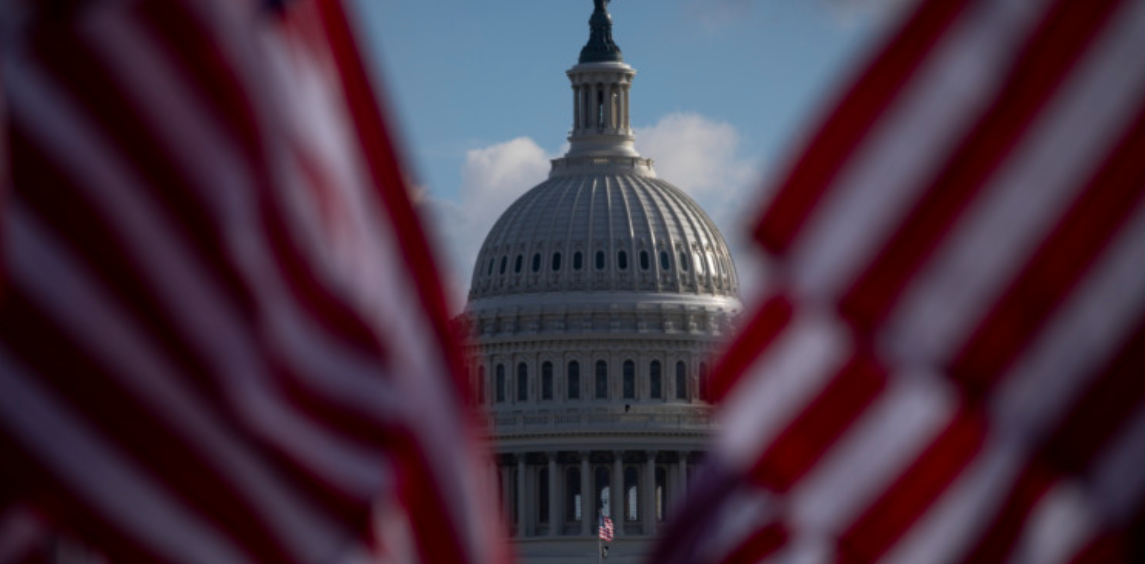Progressive Change Institute poll reveals how Harris’s partnership with Cheney impacted voter enthusiasm in Michigan and Pennsylvania.
What to Know:
- Pennsylvania independents showed an 18-point enthusiasm boost for Harris on economic issues but a 7-point drop with Cheney, a 25-point swing.
- Michigan independents had an 11-point enthusiasm gain on economic messaging and a 7-point drop with Cheney, totaling an all-time high 18-point swing.
- The economy was the top issue for voters, with many feeling they heard more about Trump’s economic plans than Harris’s.
- 54% of voters disapprove of Trump’s potential recess appointments, including 60% of independents.
- Progressive Change Institute polling highlights that clear economic messaging resonated more than controversial alliances.
During election week, the Progressive Change Institute—a research organization dedicated to advancing progressive policies and understanding voter behavior—conducted an online poll surveying over 1,000 likely voters in Michigan and Pennsylvania. The poll aimed to analyze the impact of Vice President Kamala Harris’s campaign strategies, particularly her alliance with former Representative Liz Cheney, on voter enthusiasm.
Using a robust methodology that weighted responses to reflect the demographics of each state, the survey provided a clear picture of how different campaign messages resonated with independents. The findings, presented in the poll report, revealed significant enthusiasm swings among independents when Cheney played a prominent role in Harris’s campaign. Additional insights into the Progressive Change Institute’s work can be found on their main site.
Background: The Cheney-Harris Dynamic
In the final days of her campaign, Vice President Kamala Harris made a calculated decision to partner with former Republican Representative Liz Cheney, a high-profile critic of Donald Trump. The move aimed to attract moderate and independent voters in battleground states like Michigan and Pennsylvania, where polls suggested voter enthusiasm would play a decisive role. However, the strategy sparked mixed reactions across the political spectrum.
Progressives expressed immediate discontent, arguing that Cheney’s conservative credentials and association with Republican policies were at odds with Democratic values. Independents, on the other hand, were more divided. The Progressive Change Institute and Data for Progress’s poll revealed that in Pennsylvania, independents were 18 points more enthusiastic about Harris when she focused on economic issues but 7 points less enthusiastic when she campaigned with Cheney, a net swing of 25 points. In Michigan, the gap was smaller but still notable, with independents being 11 points more enthusiastic about Harris on economic issues versus 7 points less enthusiastic when Cheney was involved, a swing of 18 points.
These figures highlight how polarizing the Cheney-Harris alliance has been. While it garnered significant media attention, critics argued it shifted focus away from pressing voter priorities like inflation and healthcare. The data suggests that the strategy, rather than building enthusiasm, may have alienated critical voter blocs in key swing states.
The Poll Results in Detail
The Progressive Change Institute’s polling paints a clear picture of how Kamala Harris’s campaign decisions impacted voter enthusiasm in Michigan and Pennsylvania. The numbers reveal a significant gap in voter enthusiasm, particularly among independents, when Harris focused on different messaging strategies.
In Michigan, independents were 11 points more enthusiastic about voting for Harris when she emphasized economic issues. However, enthusiasm dropped 7 points when Harris campaigned alongside Liz Cheney, creating a net swing of 18 points.
The results in Pennsylvania were even more dramatic. Independents were 18 points more enthusiastic when Harris focused on economic messaging, but enthusiasm fell 7 points when Cheney became a prominent figure in her campaign. This led to a staggering 25-point swing, demonstrating the polarizing effect of the Cheney-Harris partnership.
Voter Priorities
For voters in both states, the economy was clearly the most important issue. While many supported Harris’s economic platform, polling revealed a stark disparity in the candidates’ messaging reach. Voters consistently reported hearing more about Trump’s economic plans than Harris’s. This perception gap likely reinforced doubts about Harris’s ability to deliver meaningful economic change.
The enthusiasm gap and messaging disparity may have cost Democrats crucial votes in these battleground states. Despite the popularity of Harris’s policies, many voters felt her campaign failed to communicate a clear, compelling vision for addressing their economic concerns. The numbers underscore the importance of consistent, issue-focused messaging in capturing the attention and trust of swing-state voters.
The ‘Blame Game’: Who’s at Fault?
As the dust settles from the 2024 election, Democrats are grappling with internal divisions and a cascade of finger-pointing. At the center of this debate is Vice President Kamala Harris’s controversial decision to campaign with Liz Cheney. This move, designed to court moderates and independents, has been a focal point of criticism from various Democratic factions.
Progressives have been particularly vocal, arguing that Harris’s partnership with Cheney alienated the party’s base and distracted from pressing issues like healthcare and inflation. Many within this camp view the decision as a political misstep that placed media attention over voter concerns. The Progressive Change Institute’s poll shows this critique, revealing a 25-point enthusiasm swing among Pennsylvania independents and an 18-point swing in Michigan when Cheney was featured prominently in Harris’s campaign.
Moderates within the party, while more sympathetic to Harris’s approach, have also expressed frustration. They point to the disparity in messaging, with voters consistently hearing more about Trump’s economic plans than Harris’s. This failure to prioritize clear economic messaging, they argue, cost the campaign vital support in battleground states.
Ultimately, the post-election blame game highlights a deeper tension within the Democratic Party: the challenge of balancing progressive ideals with the practical demands of winning over a diverse electorate. The criticism aimed at Harris reflects broader concerns about whether the party’s messaging is effectively addressing voter priorities.
A Conservative Perspective
As a GOP-leaning consulting firm, we find these insights particularly compelling. They affirm the significance of economic messaging—a pillar of conservative strategy—and highlight how missteps by opponents can create opportunities in swing states. Understanding voter dynamics through data from organizations like the Progressive Change Institute provides valuable lessons for both sides of the aisle.
Importance of Clear Economic Messaging
Voters in these swing states prioritized economic concerns, expressing a strong desire for policies aimed at lowering living costs and challenging corporate power. Despite this, many felt that Harris's campaign did not effectively communicate her economic agenda, especially when compared to Trump's messaging. This perception gap may have contributed to decreased voter enthusiasm and support.
Partnerships and Public Perception
The decision to campaign alongside Liz Cheney, while intended to showcase bipartisan appeal, had unintended consequences. Polling data indicates that this alliance led to a significant drop in enthusiasm among independents, with a 25-point swing in Pennsylvania and an 18-point swing in Michigan. These figures suggest that such partnerships can alienate key voter demographics, particularly when they overshadow core policy discussions.
Wrap Up
The 2024 election results in Michigan and Pennsylvania highlight the pivotal role of economic messaging in shaping voter enthusiasm and support. The Progressive Change Institute’s poll underscores how voters prioritized tangible economic solutions over symbolic gestures, as seen in the stark enthusiasm swings tied to Kamala Harris’s campaign messaging. While her economic platform resonated with voters when emphasized, the partnership with Liz Cheney proved polarizing, leading to notable drops in voter enthusiasm.
These findings offer critical implications for future Democratic campaigns. Clear, consistent messaging on economic issues—such as lowering costs and challenging corporate influence—should take precedence over controversial cross-party alliances. Voters need to hear practical solutions to their immediate concerns rather than political maneuvers that might dilute the campaign’s core message.
Looking ahead, Democrats must recalibrate their strategies to better align with voter priorities. By centering campaigns on bread-and-butter issues, avoiding polarizing distractions, and delivering consistent communication, the party has the opportunity to regain the trust of swing-state voters. The lessons from 2024 serve as a roadmap for more effective voter engagement and electoral success in the years to come.


